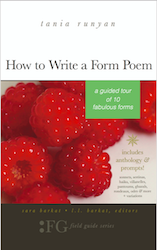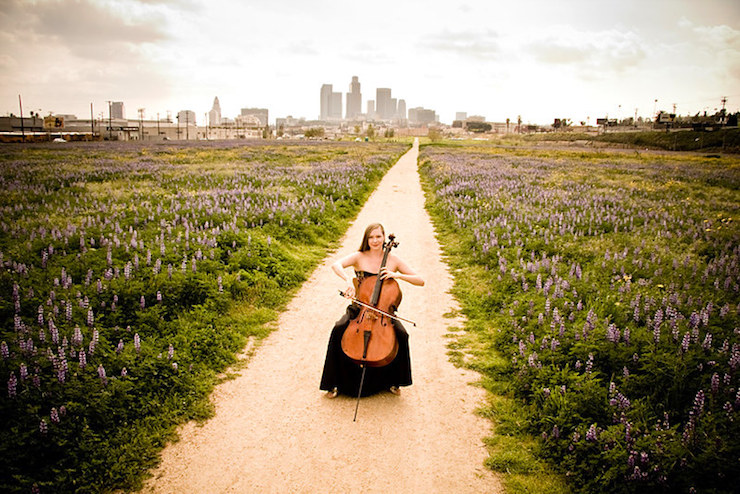Poet-a-Day: Meet David Wright
David Wright has been a friend and poetic inspiration to me for over a decade, always coming to the rescue with his literary wisdom and expertise and writing with such musicality and fluency, he creates instant masterpieces in chat windows. I am thrilled to share one of his poems—a sonnet—in How to Write a Form Poem.
I don’t want to give too much away, so here are the first six lines. You’ll read the rest, of course, if you read How to Write a Form Poem!
When the Eye and the Ear and the Voice (excerpt)
have been exhausted by the constant screens,
click—screens—scroll—news feeds of worry—noises—
thudding through the sternum—nothing unseen;
when wounded eyes, stuffed ears, ranted voices
appear—with particular static—in dreams
that once held the beloved and her choice…
—David Wright
Tania Runyan (TR): Tell me a little about the origin story of “When the Eye and the Ear and the Voice” and your choice to use the sonnet form:
David Wright (DW): This sonnet is part of a group of sonnets: “Program Notes for the Atonement: Sonnets to Accompany Max Bruch’s Kol Nidrei.” I wrote them as part of a collaborative performance with cellist Carolyn Suda and pianist Tim Pahel. So, really, the poem is part of a multi-sided conversation with those musicians, with Max Bruch, and with the Jewish legal and ceremonial tradition of Kol Nidrei, which is part of Yom Kippur. That’s all, for me, too many conversations at once to figure out how to include, so it took several sonnets, which felt to me like the program notes you get at a classical concert. Each sonnet gave me a form, and a limit for working out my engagement with the complex piece of music I was hearing and responding to.
This one, particularly, tried to engage the power of Bruch’s music and Carolyn’s performance as an alternate world, a space apart from the constant presence of digital screens in my life. The syllable counts, the rhymes, the turn, all felt right as a way of thinking about how an intense ceremony and work of art can often take us into a place other than the one we usually inhabit.
The “little song” that is a sonnet aspires to be like a small room in the body and the imagination where we can see and hear and breathe as acts of atonement, a ritual of connection with others and ourselves before we return to the worried world.
TR: What do you hope poets can learn from a book like How to Write a Form Poem?
DW:
Repetition and Variance
Any time a writer repeats something in a poem—a line, an image, a set of sounds, an arrangement of syllables—we create a form, make our readers wonder why that is important enough to repeat. And when we vary a repetition, we introduce surprise. Wait, that’s a different play on that rhyme, says the reader. Wait, says the poet, I love that this rhymes differently and also carries connotations that are new. The form informs discovery.
Attention to Habit and Choice
I have also found that writing in traditional forms or inventing new ones simply draws our attention as writers to the repetitions and variations that have worked for a long time (or that have stopped working for the poems we want to make). It exposes us to our own habits and typical moves as poets, and that is incredibly valuable to know, so that we begin to make choices and not just follow our habits.
Generous Reading
To have tried writing a ghazal or villanelle gives us a chance to become a better, more generous reader of those who have so brilliantly thrived in using those forms before us. Once you’ve stood inside your own wonky sonnet, you read a Gwendolyn Brooks or Terrance Hayes sonnet with new eyes, amazed at how other poets make beauty and meaning happen, and, one hopes, return to writing your own work with more hope and possibility.
About David Wright
David Wright’s poems have appeared in 32 Poems, Image, Crab Orchard Review, and many other places. He is the author of several poetry collections, including A Liturgy for Stones (Cascadia, 2003) and The Small Books of Bach (Wipf & Stock, 2014). His most recent collection is Local Talent (Purple Flag/Virtual Artists Collective, 2019). He lives in Central Illinois where he teaches creative writing and American literature at Monmouth College.
Photo by Muriel Jordan, Creative Commons, via Flickr. Post by Tania Runyan.
Browse more Poet-a-Day
Browse 50 States of Generosity
Check out The Yellow Wall-paper Graphic Novel
______________
How to Write a Form Poem: A Guided Tour of 10 Fabulous Forms

You’ll also be entertained by Runyan’s own travel stories that she uses to explain and explore the various forms—the effect of which is to bring form poetry down to earth (and onto your own poetry writing map)!
BUY HOW TO WRITE A FORM POEM NOW!
- Flowers of California: California Poppy - December 8, 2022
- Flowers of California: Lily of the Nile - October 13, 2022
- Flowers of California: Crape Myrtle - October 5, 2022


Megan Willome says
Oooh, I love that part about from freeing us from our own habits!
Laurie Klein says
Lately I feel (beautifully) haunted by sonnets. Never tried one. Perhaps it’s time. Thanks, Tania and David.
Tania Runyan says
It is definitely time, Laurie! 🙂